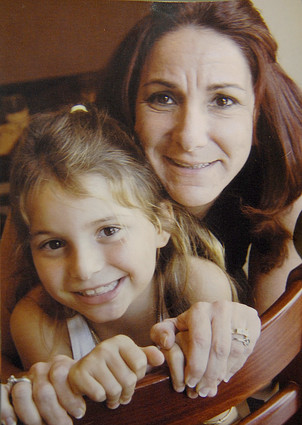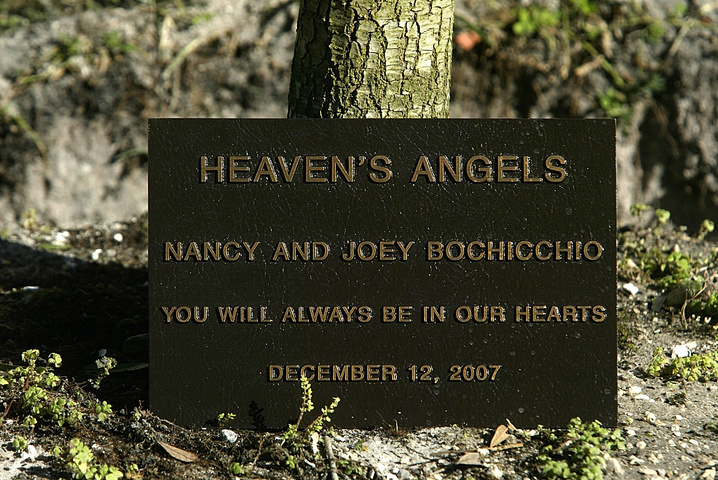South Florida
Media Coverage
*~ February, 2010 -- Page 1 ~*
 |
 |
|
| In Loving Memory Of |
||
'Emergency PINs' to summon help at ATMs? (2/8/10)

'Emergency PINs' to summon help
at ATMs?
Punching number in reverse won't call help, but law could bring urban
myth to reality
By Martin Merzer
In coming weeks, a little-known element of the new credit card reform
law seems certain to re-ignite a controversy that banks keep trying
to avoid, fuel an enduring urban (and suburban) legend and draw attention
to a matter of life and death for the millions of Americans who use
automated teller machines. 'Emergency PINs' to summon help at ATMs?
The issue at hand: the feasibility of a security system that would allow
consumers to silently signal police they are being robbed or kidnapped
during an ATM transaction.
Under the Credit CARD Act of 2009, the Federal Trade Commission is required
to submit a report to Congress that examines the need for and potential
use of an ATM warning system. The report is due by Feb. 22, though agency
officials say it could be released earlier.
Support from ATM entrepreneurs
Supporters of such a "send help right away" system say their
day might finally be arriving.
"Sunshine kills a lot of germs, and the banks have been keeping
the sunlight off this problem for a long time," said Joe Zingher,
an Illinois attorney and inventor who has patented SafetyPIN, a reverse
personal identification number system. It is one of several proposals
that would silently alert police during ATM transactions conducted under
duress.
Ron Russikoff, creator of an alert system called ATMOnGuard, agreed.
"The more attention this issue receives," he said, "the
better the public will be served."
He noted that most ATM-related crimes do not begin at the machine. Rather,
they start as an abduction, with the victim later forcibly accompanied
to an ATM and compelled to make a withdrawal.
"Therefore, there is the need for an additional level of protection
for the cardholder at the ATM, and that is a discreet alert system that
is both easy to use for the cardholder when under duress and cost effective
for the banks," he said.
Not so fast, say bankers
Opponents of such a system say it simply is not necessary and, in fact,
could place crime victims in greater peril.
"We just feel that banks have looked into these proposals several
times over the years and have found that they're just not the best solutions
for providing safety," said Margot Mohsberg, a spokeswoman for
the American Bankers Association, which represents nearly all of the
nation's banks.
Wait a second, you might say. Doesn't the reverse PIN system already
exist at most ATMs? Just punch in your PIN number in reverse (1234 becomes
4321) and help will be on the way?
The system is a myth, despite persistent Internet claims to the contrary.
To be super-clear: The system is not in place at any of the estimated
425,000 ATM in the United States. Do not try it. It will not work for
you. Period.
A myth so good it deserves study
That might change, depending on the conclusions of the FTC study, which
was mandated by an amendment attached to the omnibus CARD act. That
amendment requires the FTC, in consultation with the Justice Department
and the Secret Service, to study the feasibility and cost effectiveness
of emergency PIN numbers, panic buttons or any other safety mechanism
that might be added to ATMs.
The study, which is being conducted by the FTC's Bureau of Economics,
also is required to provide an estimate of the number and severity of
the ATM crimes that would be prevented by deploying that technology.
To date, no one really knows how many crimes are committed at ATMs,
because the statistics usually are blended into the larger categories
of bank robberies, kidnappings or other felonies.
That said, estimates of ATM-related crimes generally range between 3,000
and 5,500 per year. Some of them end tragically -- the victims murdered
after they withdraw cash and hand it over to the assailants.
Lack of data stalls interest
The absence of firm numbers has been a key stumbling block for Russikoff,
Zingher and other supporters of ATM emergency notification systems.
"With the issue of demand, there is the perception that ATM cardholder
crime is not severe enough to warrant an overhaul of the current ATM
system and that current efforts to protect the cardholder are effective
enough," Russikoff said. "It is our hope that this study will
not also shed light on the severity of this issue, but further reinforce
our findings that a significant majority of the crimes do not even originate
at the ATM, thereby rendering current ATM safety measures ineffective."
Said Zingher: "If you can't measure it, it's not a fact. For the
banks, that's really the key, as far as I can tell."
A former military policeman, Zingher patented the reverse PIN system
in 1998 and has been trying to persuade banks to deploy it ever since.
"I thought I had the best of all possible worlds," he said.
"Make loads of money for saving people's lives. Where's the downside
of that?"
It took awhile, but Zingher found out.
To date, how much money has he made on the system? "Not a dime,"
said Zingher, who says he has spent $100,000 on the project and is now
broke and living with his brother. "Not one dime."
The American Bankers Association says that 425,010 ATMs were in use
in the United States in 2008, the last year for which statistics are
available. Those machines processed 11.8 billion transactions that year
and about half of those transactions involved cash withdrawals, according
to industry estimates.
How 'reverse PIN' would work
In the reverse PIN system, an ATM user who is under duress punches in
his or her PIN, but in reverse. (Other emergency codes would be available
to ATM users who, inadvisably, chose palindromic PINs such as 4444 or
4224.)
To all appearances, the machine responds normally. It churns out cash
and a receipt. But silently, behind the scenes, the bank's computers
recognize the emergency code and flash an alert to local police.
This, advocates say, gives authorities a head start in locating the
victim and possibly saving him or her from greater harm.
In addition, the system would appear to offer the potential of a major
deterrent effect. The sheer knowledge that victims might be sending
a silent call for help could discourage criminals from even trying to
rob an ATM user.
But the reverse PIN system, which Zingher said could be installed in
every ATM in the country for about $10 million, is not the only one
that exists, at least theoretically.
Russikoff's ATMOnGuard system
would have ATM users routinely punch in two codes. One would be their
usual PIN; the other would be a second password that could, if the user
were under duress, be altered to send a silent call for help.
A third system actually has been tried at several hundred ATMs. Called
the ATM911 emergency communications system, it involves a physical button
that can be pressed to initiate a two-way call to the local 911 emergency
operations center. Company officials emphasize, however, that the system
is designed for use only after a robbery and by victims who are left
at the scene by the assailant.
Such victims might not agree with
this, but they are relatively lucky. Authorities often refer to ATM
robberies as "express kidnappings." The reason: In most ATM-related
crimes, the abduction and payoff/ransom come in quick succession.
Traffic cases
Though the crimes are relatively rare -- even 5,500 per year work out
to one for every 2.14 million ATM transactions -- they can be daunting
to solve and haunting for all concerned.
Police in Boca Raton, Fla., for instance, are still struggling to make
an arrest in the deaths of Nancy Bochicchio, 47, and her daughter, Joey,
only 7. Both were shot in the head in the back seat of their car after
the single mother was abducted at a posh shopping mall and forced to
withdraw $500 from a nearby ATM.
That happened on Dec. 13, 2007. Despite a $350,000 reward, police have
worked through 1,900 leads and have come up empty. Now, they say they
are reduced to trying to trace a pair of goggles found inside Bochicchio's
car.
Cases like these appall advocates of ATM emergency systems, who say
that issuing an alert from the ATM machine might be the only chance
a victim has to call for help.
Practical objections
Bank representatives, however, say that such cases are the extreme and
that the installation of safety systems could put ATM users in more
danger. They say: Many people have enough trouble remembering their
usual PIN. Stressed by a robbery in progress, they easily could stumble
while trying to input a reverse PIN and anger the assailant.
Authorities generally advise victims not to mount any resistance during
a robbery because doing so could enhance the risk of physical harm.
ATM withdrawals generally are limited to several hundred dollars per
24-hour period -- not enough money to risk your life over.
Bank industry officials say consumers
are far better off taking sensible precautions to avoid incidents before
they occur. (Marketers of the ATM911 system have posted security tips
for users of walk-up ATMs and drive-up ATMs.)
"We think these systems might present the person with a false sense
of security," said Mohsberg, the spokeswoman for the American Bankers
Association. "And what if the person tries to put in a reverse
number and chokes and alerts the robber, which puts them in greater
danger?"
Nonsense, said Zingher.
"That's like having the captain of the Titanic saying, 'We can't
use those lifeboats because someone might slip,'" he said.